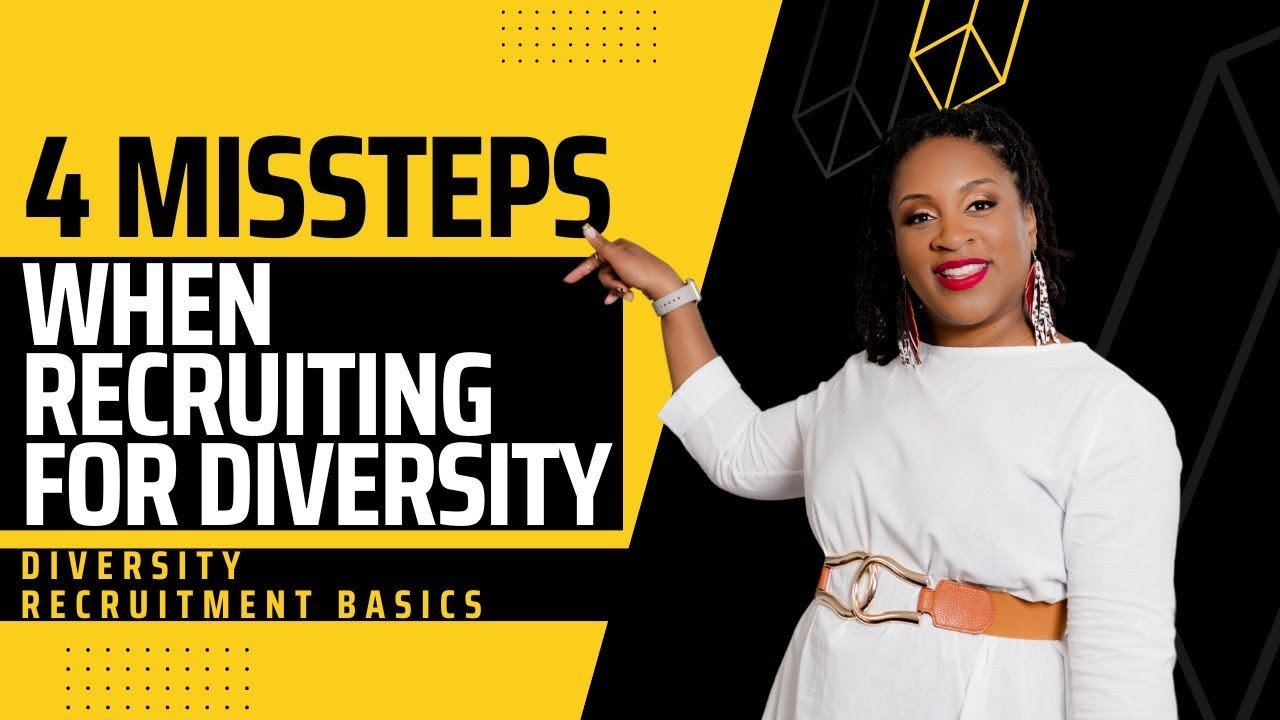4 Missteps When Recruiting for Diversity
This is #IncreaseDiversity, a weekly newsletter series + Increase Diversity Toolbox sharing best practices for employers who want to learn how to….well, increase diversity. To see previous editions, visit JenniferTardy.com. | IG: @IncreaseDiversity | Increase Diversity - YouTube
JTC News + Events
👉🏾 RECRUITERS | Qualified Diversity Recruiter (QDR) Certification Program | Did you miss our recent flash sale? Do not worry, you can still get in on our early bird rate for our diversity recruiting certification program through December 31, 2022. Ready to get your recruiters certified in the new year? CLICK HERE to learn more.
👉🏾 INCREASE DIVERSITY™ AWARDS | We have received a great response for our inaugural Increase Diversity™ Awards and so, we have decided to move the deadline to December 31st, 2022! These awards recognize workplaces AND individuals who are creating more equity and access. Send in your entries for free. CLICK HERE
Here on Team JTC, we are always sharing new ways to implement diversity recruiting because we have observed that many recruiters and hiring managers (with really good intentions) approach this work in highly ineffective ways. So, recently, I published 4 Missteps when Recruiting for Diversity where I discuss four common missteps you must avoid when hiring people from untapped communities. By the way, be sure to subscribe when you visit my channel.
Don’t have time to watch the entire video? Here are key takeaways:
Diversity Recruiting Misstep # 1: Thinking that diversity recruiting is only about SOURCING.
This is a common misstep in diversity recruiting. When recruiting for diversity, you must understand that it is not only about increasing diversity in your candidate pool, but also about removing bias from the hiring process too (i.e., creating equity in hiring). The idea of recruiting for diversity is to ALSO provide underrepresented groups an equitable opportunity to apply, get hired, and eventually get promoted.
Diversity Recruiting Misstep #2: Thinking that visual diversity is an acceptable recruiting STRATEGY.
This means making assumptions about a person’s race or gender or any other identifiable factors based on their name, appearance, organizational affiliations, etc. The issue here is that what you see (how YOU may identify a person based on their appearance) may not be how this person would self-identify. In addition, it just does not feel good to sit behind a computer, scrolling through profiles on LinkedIn, for example, simply because you are assuming that people identify in specific ways. Recruit in spaces that are overrepresented in areas where you are underrepresented AND leverage a formal self-identification program to learn how others identify themselves, as long as it is legal in your country to have a self-ID program; which it is in the United States.
Diversity Recruiting Misstep #3: Thinking that you must hire someone based on how they IDENTIFY.
Hiring someone based on how they identify is just as illegal in the U.S. as not hiring someone because of how they identify. Your goal as a recruiter is to create a diverse candidate pool, one that is well-represented. Next, as a hiring team, focus on removing biases so that you can hire the most competitive person. For more on this, I would recommend you read my other newsletter called “The Only Formula You Need to Increase Diversity.”
Diversity Recruiting Misstep #4: Thinking that diversity recruiting is about hiring based on potential ONLY.
Even though I understand the positive intent of hiring based on potential, I have many thoughts about this strategy. One thought is that hiring “for potential” as a key strategy in diversity recruiting can create a stigma that suggests that to increase diversity, recruiters must “soften the qualifications” or flat-out hire unqualified people. And for that reason alone, I often urge companies to be careful when utilizing this philosophy. Everyone, including candidates from marginalized communities, should be hired based on the value they bring to the role. Before you leverage hiring for potential as a diversity recruiting strategy, focus FIRST on training recruiters and hiring managers to remove their bias so that they can see that many of the candidates that are being rejected (due to bias) are actually qualified, if not the most competitive. Read more on hiring for potential in the previous article.




